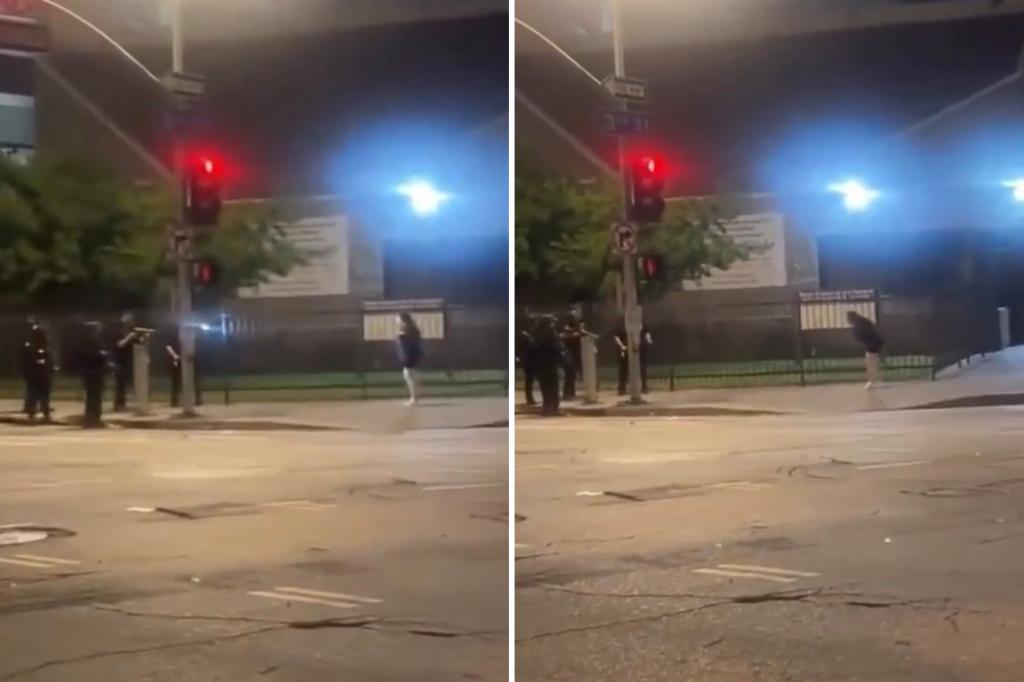Urgent Evacuation Alerts in Los Angeles: Understanding the Wildfire Aftermath and Mudslide Risks
As Los Angeles faces the grim reality of recent devastating wildfires, the city is now contending with another imminent threat: mudslides. In a proactive response, officials have issued urgent evacuation alerts for burn areas deemed vulnerable. With the potential for heavy rains in the forecast, residents are being urged to take immediate action to ensure their safety and mitigate the risk to infrastructure.
The Wildfire Context
The wildfires that have swept through Los Angeles are not merely a seasonal occurrence but a stark reminder of the ongoing climate crisis. These fires, fueled by a combination of extreme heat, dry conditions, and strong winds, have charred vast landscapes, leaving behind a scorched earth that is now susceptible to erosion and landslides.
According to the California Department of Forestry and Fire Protection (Cal Fire), the impact of these wildfires extends beyond immediate destruction. The aftermath creates an unstable environment where the natural defenses of the landscape are compromised. Trees, vegetation, and roots that normally hold soil in place have been destroyed, leading to an increased risk of mudslides, particularly in areas with steep terrain.
The Immediate Threat of Mudslides
Following the wildfires, the risk of mudslides becomes a pressing concern. Mudslides occur when heavy rainfall saturates the soil, causing it to lose cohesion and slide down slopes. In burn areas, the lack of vegetation exacerbates this risk significantly. The Los Angeles County Public Works has identified several key areas where mudslides are most likely to occur, particularly in the foothills and canyons surrounding the city.
Officials have highlighted the following factors that contribute to mudslide risks:
- Burn Severity: Areas with more severe burns are at higher risk due to the complete loss of vegetation.
- Soil Saturation: Heavy rains can quickly saturate the soil, increasing the likelihood of mudslides.
- Topography: Steeper slopes are more susceptible to landslides, particularly in burned regions.
- Weather Patterns: Forecasts predicting heavy rainfall can trigger immediate evacuation alerts.
Evacuation Alerts and Safety Measures
In light of these risks, officials have moved swiftly to issue urgent evacuation alerts for affected areas. Residents are advised to comply with these alerts and evacuate as soon as possible to ensure their safety. Here’s what residents should know:
- Evacuation Routes: Familiarize yourself with the designated evacuation routes. Knowing the quickest and safest way out of your area is crucial.
- Emergency Kits: Prepare an emergency kit that includes essential supplies such as food, water, medications, and important documents.
- Stay Informed: Keep up with local news and official announcements regarding weather updates and evacuation orders.
- Community Resources: Utilize community resources such as shelters and local emergency services for assistance during evacuations.
Community Response and Preparedness
The response from the community has been commendable, with many residents coming together to support one another during these challenging times. Local organizations and volunteer groups have mobilized to provide assistance to those affected by the wildfires and the subsequent mudslide risks. Community centers have opened their doors to offer shelter and resources for evacuees.
Moreover, preparedness initiatives are underway, with educational programs being implemented to help residents understand the risks associated with living in fire-prone areas. These programs emphasize the importance of creating defensible spaces around homes, maintaining clear vegetation, and having a family evacuation plan in place.
Long-Term Solutions and Landscape Management
While immediate evacuation alerts are crucial for safety, long-term solutions are necessary to address the underlying issues of wildfire and mudslide risks. Landscape management plays a vital role in this regard. Reforestation efforts, controlled burns, and the restoration of native vegetation can help stabilize soil and reduce the risk of future mudslides.
Experts suggest a comprehensive approach involving local government, environmental agencies, and community stakeholders to develop sustainable land management practices. This could include:
- Restoration Projects: Initiating projects aimed at restoring natural habitats and stabilizing soil in vulnerable areas.
- Public Awareness Campaigns: Educating residents about the importance of vegetation in preventing erosion and maintaining landscape health.
- Infrastructure Upgrades: Investing in infrastructure that can withstand the impacts of mudslides, such as drainage systems and retaining walls.
Conclusion: A Call for Vigilance and Resilience
As Los Angeles grapples with the aftermath of wildfires and the looming threat of mudslides, the situation serves as a crucial reminder of the challenges posed by climate change and natural disasters. Urgent evacuation alerts have been issued for vulnerable burn areas, ensuring residents are informed and prepared for potential risks.
While the immediate focus is on safety and evacuation, it is essential to foster resilience through community support, landscape management, and education. The road to recovery will require a collective effort, but with vigilance and proactive measures, Los Angeles can emerge stronger and more prepared for future challenges.
Residents are encouraged to stay informed, follow local guidelines, and prioritize safety as they navigate this difficult period. Together, the community can overcome the aftermath of wildfires and mitigate the risks associated with mudslides, paving the way for a safer future.
See more CNET 247



